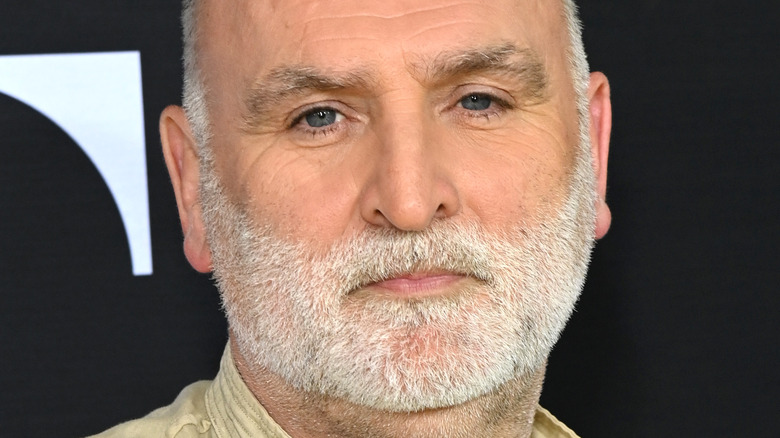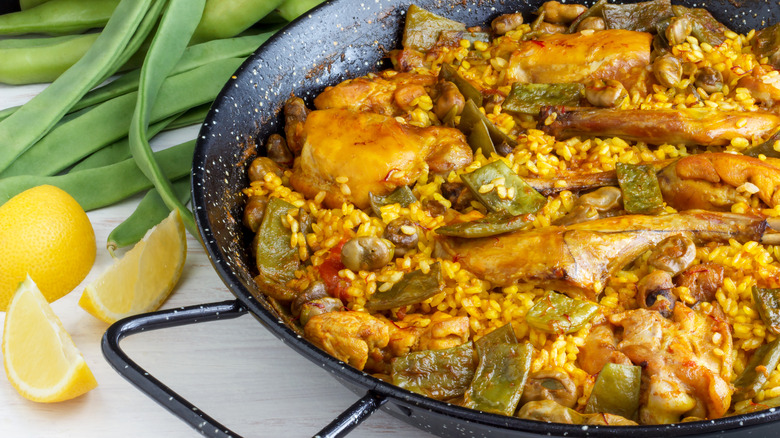You Can Thank José Andrés For The Accurate Paella Emoji
If you happen to come across a food pic on social media that is especially saliva-inducing, you may even be tempted to leave a comment followed by a food emoji or two. But, with a limited number of food emojis available, finding a relevant one can sometimes be a struggle.
Granted, there's an abundance of food emojis like sushi and ramen, but that can be tied to Japan's part in bringing emojis to the rest of the world. Though it would be convenient to have an emoji for everyone's favorite dish (chicken nugs, anyone?), moving a desired emoji from conception to reality can be a difficult task to achieve, let alone with all the details people envisioned. One particular food emoji, however, had some help from an important ally.
Chef José Andrés was very invested in the world having access to a paella emoji. This may not come as a surprise to anyone familiar with Andrés' passion for sharing his love of Spanish cooking. Not only has he referred to himself as "Spanish cooking's most ardent missionary to the United States," but he has even said he "wouldn't rest until every American family has a paella cooking away on the backyard Weber" via CBS. Naturally, Andrés wouldn't be satisfied with just any paella emoji; the chef also needed it to be accurate!
The first paella emoji wasn't exactly what Andrés had in mind
Speaking with USA Today, chef José Andrés called paella "one of the most difficult dishes in the history of mankind." It might have also proven to be one of the most difficult emojis. Back when it debuted in 2016, the paella emoji had shrimp, mussels, and peas, but, the chef had different expectations. According to Food & Wine, Andrés had worked with advertising executive Guillermo Navarro on creating the emoji. But, the duo had envisioned depicting paella Valenciana.
Finally!!!! #paellaemoji 🥘💛 pic.twitter.com/gb4JF4K5sz
— rocio.tomas (@rociotomas) April 15, 2017
The traditional dish, according to Andrés, calls for chicken, rabbit, and beans — and no shellfish. Of course, he is well aware that variations exist. But as he explained to Food & Wine, "If someone is not even making traditional paella anywhere, who else but me is going to make it?" Indeed, making paella is arguably a family tradition for the chef, who cooked it with his dad and whose daughters apparently inherited his paella-making genes.
The original emoji did not ring true to Andrés and was met with reprisal on Twitter as well. Navarro campaigned to change the emoji, even visiting Japan and comparing paella to sushi. The emoji was updated in 2017 with key traditional ingredients, like chicken, garrafó, and green beans. This time around the emoji stuck and even gave us lemons, but that's just how life is sometimes. Andrés approved of it anyway, saying, "This is as good as it gets. I'm very very happy."

